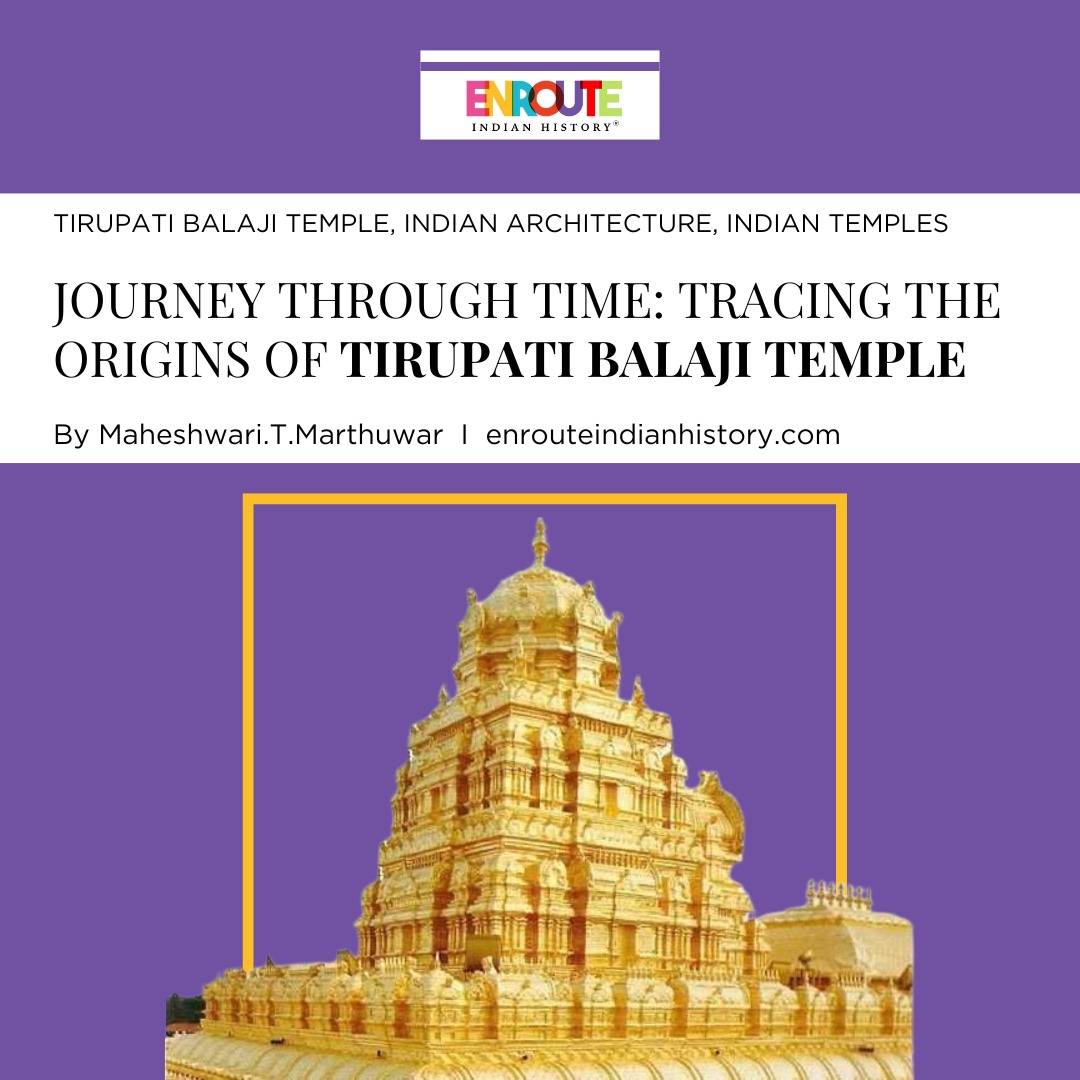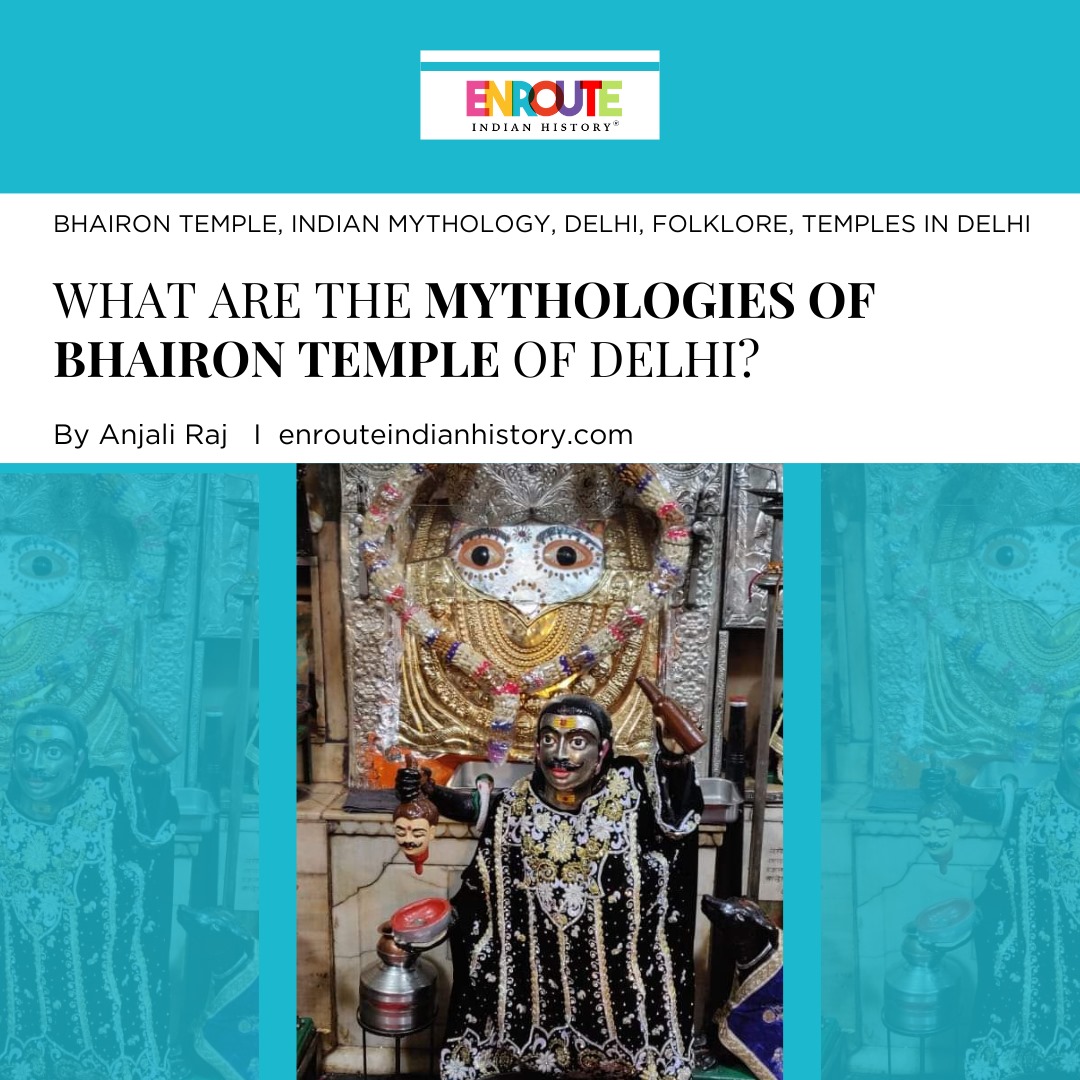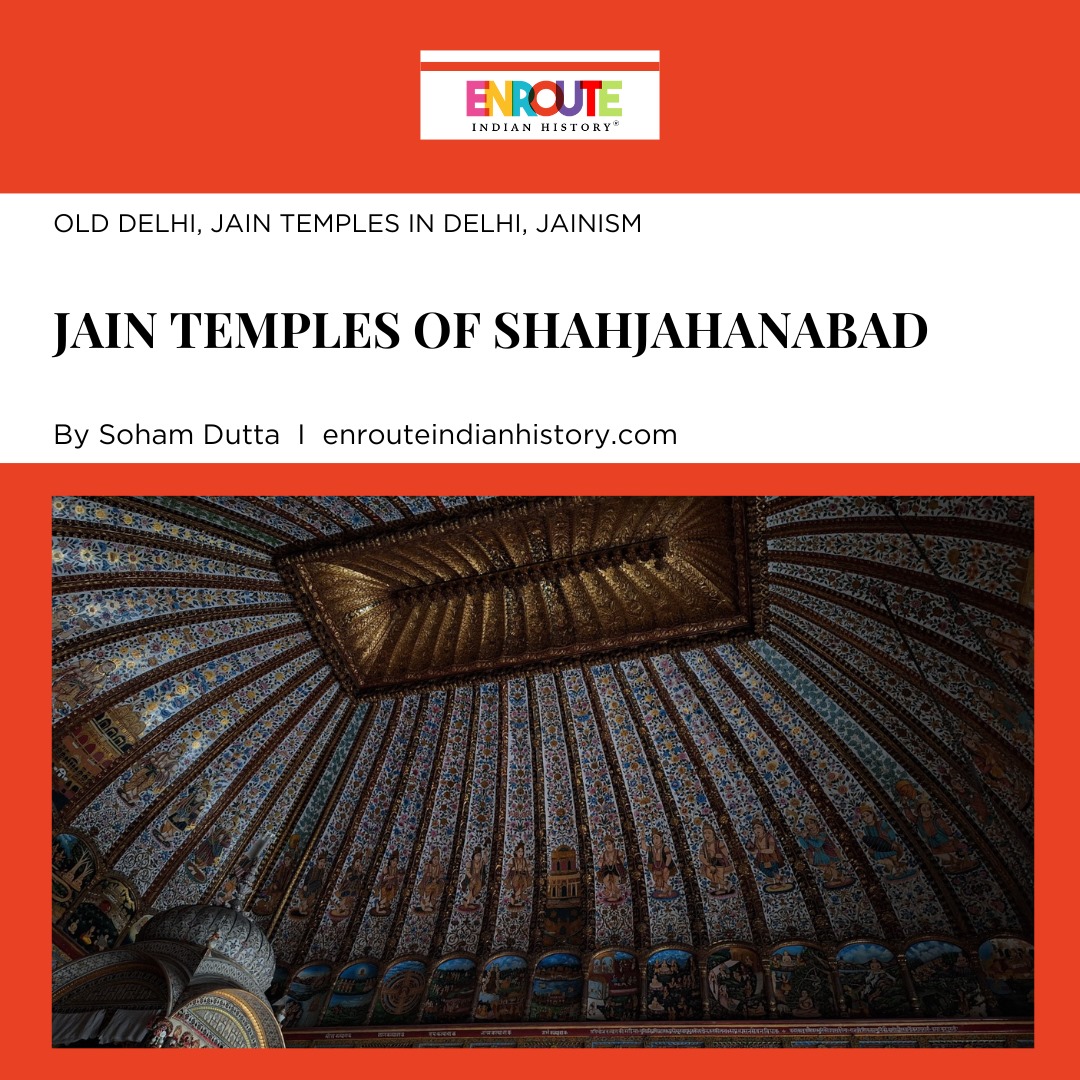What’s the History of Eidi? A Deep Dive into the Eid Custom of Gifting Money to the Young
- enrouteI
- April 10, 2024

For many Muslims looking forward to the upcoming Eid celebrations, the tradition of Eidi is a source of great excitement. Eidi, also known as Eidiyya and Eidhi, is a practice where children and young family members are presented with cash by older relatives and family friends. This article weaves together multiple sources—including Islamic history, an Iranian legend, and a short story by a remarkable Indian writer—to offer a history of Eidi and its role in Eid celebrations.
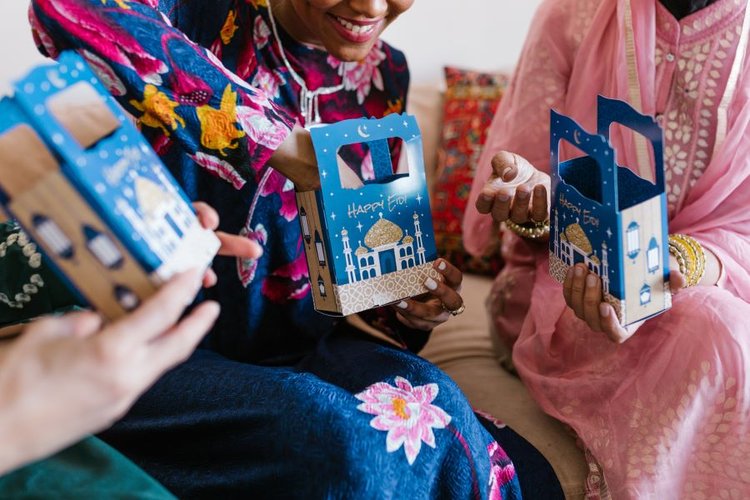
Figure (a): Gift-giving is a core part of Eid traditions, and Eidi is distributed in different ways across the world. In some communities, young family members receive Eidi, and gifts or cash are also distributed to other children in the neighbourhood.
Source: Stock Photo, Pexels
Eidi across Islamic Dynasties:
One of the most commonly found histories of the tradition of Eidi traces it back to the 10th and 12th centuries CE. During this period, an area encompassing what is present-day Algeria, Tunisia, Sicily, Egypt, and Syria came under the rule of the Fatimid dynasty (909–1171), an offshoot of a Shi’i sect from North Africa (Yalman 2001).
According to Farah Maghoub (2019), on the first day of Eid, the emperors of the Fatimid dynasty would distribute Eidi to all the citizens of the land—old and young, alike—in the form of money, fruits or clothes. On this day, scholars and Quran reciters would receive a special Eid gift of silver dirhams (Maghoub 2019). Then, under the rule of the Mamluk sultanate (1250–1517), the tradition of Eidi became even more specific. It was now known as “al gamkeyya”, a term that translates to “money allocated for buying clothes”. The rulers would distribute this money to subjects, with each person’s Eidi being based on their social class. For instance, princes and high-ranking military men would receive Eidi from the Sultan himself, in the form of gold dinars piled high on a magnificent plate, and surrounded by delicious Eid sweets and kahk (Eid cookies).
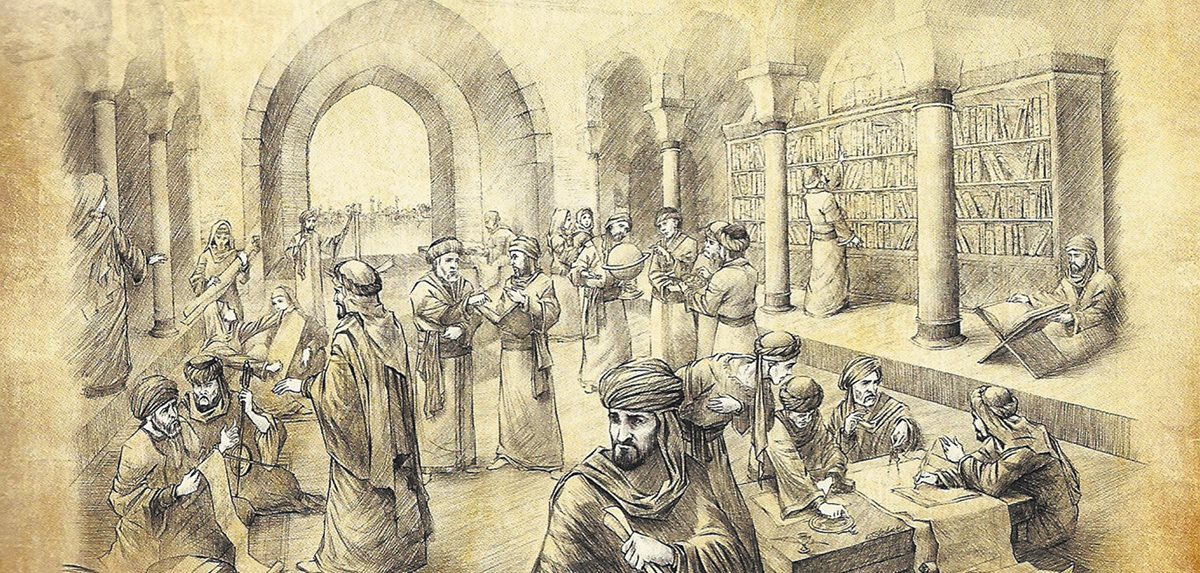
Figure (b): The Fatimid Empire is sometimes called the ‘Golden Age’ of Islam, as the dynasty made many advances and solidified and standardised many Islamic practices that we see today. Unsurprisingly, the practice of Eidi can also be traced back to the Fatimids.
Source: Druze Times

Figure (c): Kahk or Eid cookies were also presented as a part of the royal eidi distribution. These soft cookies were filled with honey, syrups and many dry fruits, like pistachios and nuts.
Source: Amira’s Pantry, blog and recipe site.
Finally, it was under the rule of the Ottomans that the tradition took the form familiar to us today. In the Ottoman period, instead of the rulers distributing money, Eidi took the form of money and gifts given predominantly to children by their parents and older relatives (Maghoub 2019). Interestingly, sometimes the governments in Islamic countries do step in and play the role that rulers did in the past. For instance, in 2022, the UAE government—under the instructions of Sheikh Mohamed bin Zayed, the Crown Prince of Abu Dhabi—generously distributed eidi to the children of needy families on social welfare (Al Amir 2022).
A History of Eidi from an Iranian Perspective:
A parallel but connected history of this tradition can be drawn by centring Iranian sources and stories. A blog post on Tavazo Europe called ‘Where Did Eidi Come From’ suggests that an alternative history of Eidi comes from renowned scholar and polymath Abu Rayhan Biruni, more commonly known as al-Biruni.
The tradition of giving Eidi (gifts) has various narratives. Abu Rayhan Biruni, quoting Azarbad, a Zoroastrian cleric from Baghdad, says that sugar was discovered in Iran on the day of Nowruz (the Iranian or Persian New Year celebration). Before this day, no one had known about the existence of sugar or sugarcane. Jamshid, a famous king in Persian mythology, is said to have seen a substance oozing out of reed (sugarcane syrup oozing from the cane). Tasting it, and finding it to be sweet, he ordered its extraction and sugar was produced. People celebrated by giving sugar as gifts to each other, and gift-giving became a custom.
The shift from sugar to money is also found in Iranian history. According to the same article, around the year 304 CE, during the reign of King Hormoz II of the Sassanid Empire, giving coins as Eidi became customary. Historical records indicate that another king, Darius II, ordered specially minted gold coins for this purpose in 416 CE—these coins depicted a soldier who was shooting a bow. Eventually, the tradition expanded to encompass traditional and agricultural gifts that were more affordable than gold coins.
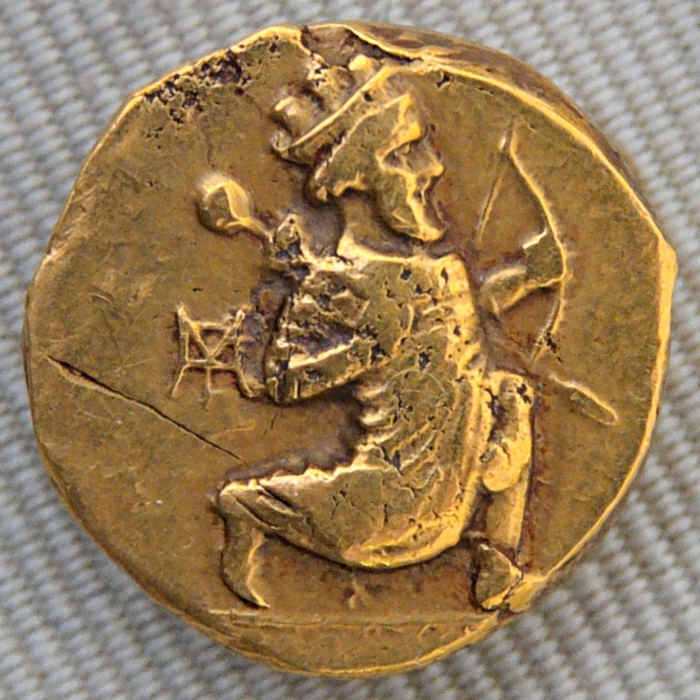
Figure (d): Under the Sassanid Empire, Eidi eventually began to be distributed to subjects in the form of coins, which rulers sometimes had specially minted. This coin, minted by King Darius II, depicts a soldier shooting a bow.
Source: Wikimedia.
Why is Eidi Given, and What Forms Can Eidi Take?
Across dynasties, regions and time periods, Eidi has remained a crucial tradition of Eid celebrations. The presents offered to young Muslims are thought to reward them for the period of fasting they have undertaken in the month of Ramzan. This practice has precedence in the earliest annals of Islamic history. Prophet Mohammad is believed to have called upon Muslims to exchange gifts. In a hadith narrated by the Prophet’s wife, Aisha, it is said, “exchange presents with one another, for they remove ill feelings from the hearts” (Egypt Independent 2017).
Eidi is exchanged between friends, family and kin and need not necessarily take the form of cash. As an article by the Bonyan Organisation indicates, Eidi has evolved to take the form of a variety of gifts such as books, cards, clothes, electronics, gadgets, and toys (Shi 2015). Nonetheless, some families decide to stick to cash eidi to resist the commercialisation of an ancient tradition, and to use this opportunity to teach children about money management and the value of saving. Allowing children to handle money themselves and spend it on what they want to is a way of encouraging responsibility and accountability around money matters. For the younger children, counting and keeping track of money also becomes an enjoyable way to reinforce basic mathematics (Cash Matters 2023).
Idgah: Capturing the Sentiment of Eidi
As some of my Muslim friends shared, Eidi, or the giving away of money, is also a valuable avenue for introducing children to the notion of zakat or charity, one of the five pillars of Islam. Encouraged to give away a small portion of their eidi, or to use a bit of it to purchase something for someone else, the tradition of eidi teaches children to cultivate generosity, empathy and community spirit.
Perhaps the most beloved example of the link between eidi and selflessness is found in the short story Idgah by Munshi Premchand. Originally published in 1933 in Hindi, the story focuses on a four-year-old orphan boy named Hamid. Hamid, who lives with his grandmother, receives an eidi of three paise. His other friends, with their larger sums, spend their eidi on candies, toys and joyrides. They make fun of Hamid, who continues to hold on to his eidi. Thinking of how his grandmother burns her fingers every day while making rotis, Hamid uses his eidi to go to a hardware store and purchase a pair of steel tongs for his grandmother. He returns home with this gift, and while his grandmother is initially upset that Hamid did not spend the money on himself, she is touched by his thoughtfulness, love and generosity.
Many of us may have read this story or an adaptation of it, while in school. In an article for the Times of India, Shailvee Sharda (2013) writes that Munshi Premchand’s grandson Vijay Rai still narrates the story of Idgah to children in his neighbourhood, in an effort to keep the spirit of the tradition alive. Premchand’s remarkable short story—which you can read in the original here—is simultaneously able to depict a tender familial relationship, paint a vibrant picture of a collective cultural festival, and leave us with a lesson about selflessness that is valuable for us all, regardless of faith. As friends, families and communities around us celebrate Eid and distribute eidi this year, we hope to recognise the long history of the tradition and the significant role that it continues to play today.
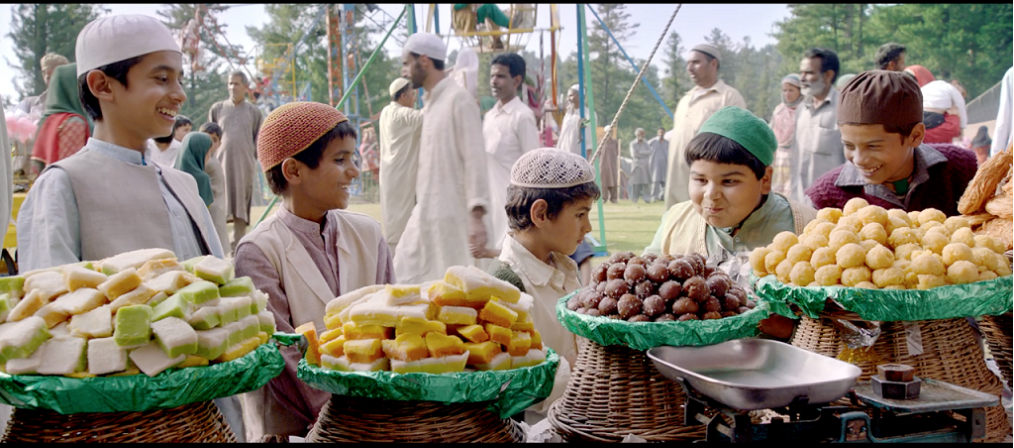
Figure (e): A still from the movie ‘5 Rupya’ (2017) or ‘5 Rupees’, an adaptation of the story ‘Idgah’ by Munshi Premchand that was directed by Piyush Panjuani and starred Shabana Azmi. This version of the story was set in the present-day Himalayan foothills, and the film was shown at the Dubai International Film Festival.
Source: Connected To India Blog
Courtesy: Dubai International Film Festival
References:
Al Amir, S. (2022). UAE to Give Eidiyah to Children of Needy Families on Social Welfare. The National UAE. https://www.thenationalnews.com/uae/government/2022/05/01/uae-to-give-eidiyah-to-children-of-needy-families-on-social-welfare/.
Cash Matters (2023). From Eidi to Education: Cash Helps Kids Learn Money Management. https://www.cashmatters.org/blog/from-eidi-to-education-cash-helps-kids-learn-money-management
Egypt Independent (2017). What Do You Know about the Gifts for the Muslim Feast ‘Eid’? Egypt Independent. https://www.egyptindependent.com/know-gifts-muslim-feast-eid/.
Maghoub, F. (2019). Check out the Interesting History behind the Eidiyah. Scoop Empire. https://scoopempire.com/check-out-the-interesting-history-behind-the-eidiyah/.
Sharda, S. (2013). Eidi: a Tradition Wrapped in Emotions & Nostalgia. The Times of India. 9 Aug. https://timesofindia.indiatimes.com/city/lucknow/Eidi-A-tradition-wrapped-in-emotions-nostalgia/articleshow/21718937.cms.
Shi, K. (2024). Eidi (Eidya): Spreading Happiness During Eid Times . Bonyan Organization. https://bonyan.ngo/blog/eidi-eidya/#:~:text=The%20act%20of%20giving%20Eidi.
Tavazo Europe. (2024). Where Did Eidi Come from? https://tavazoeurope.com/en/where-did-eidi-come-from/.
Yalman, S. (2001). The Art of the Fatimid Period (909–1171) | Essay | The Metropolitan Museum of Art | Heilbrunn Timeline of Art History. The Met’s Heilbrunn Timeline of Art History. https://www.metmuseum.org/toah/hd/fati/hd_fati.htm#:~:text=In%20the%20tenth%20to%20twelfth.
- April 25, 2024
- 25 Min Read
- April 25, 2024
- 14 Min Read
- April 25, 2024
- 6 Min Read


